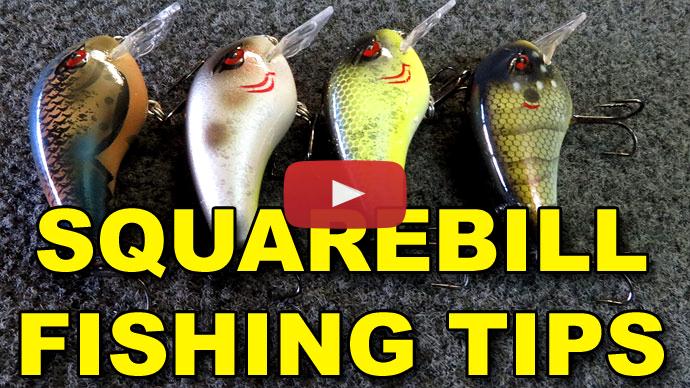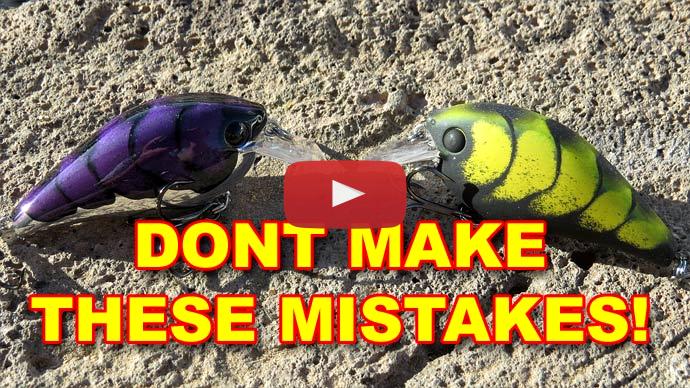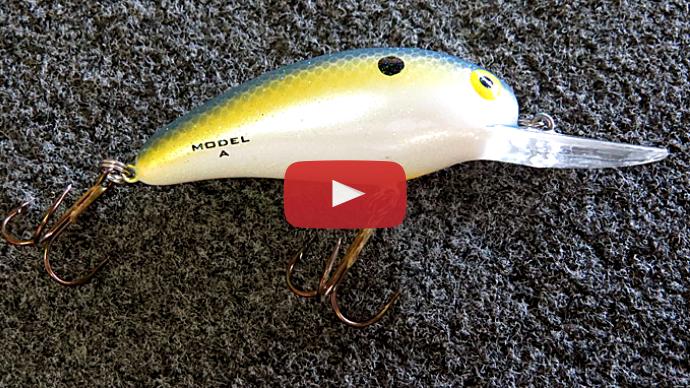Glenn: There we go.
Keri: Got another one?
Glenn: He smacked that. You can tell he wanted it.
Keri: Awesome, squarebill fishing. He is pulling on it.
Glenn: He is pulling. Come here, dude.
Keri: I haven't even seen him yet. I can't even tell you what he is. Oh, it's a nice largy.
Glenn: Come here.
Keri: Oh, it's a smallmouth.
Glenn: He's a smallmouth.
Keri: Nice smally, too.
Glenn: If I can get him in.
Keri: He does not want to come in. He takes one look at you, and he's like, "I'm done. I don't like you no more."
Glenn: Come here. Here we go.
Keri: Yeah, look at that one.
Glenn: It's a good-looking smally.
Keri: Nice looking smallmouth. Look at that.
Glenn: I'll take that.
Keri: Yeah, definitely.
Hey, folks, Glenn May here at BassResource.com. And today, I wanna talk to you about square bill crankbaits, how to fish those. They've become very, very popular over the past few years and for good reason, they catch a lot of fish. They're great for fishing in cover especially. They work themselves through without getting hung up as much as you would other crankbaits with different styles of bills. So let's talk a little bit about them.
Here I've got a medium-power, fast-action rod, and what that translates to is you've got quite a bit of bend in here, good amount of parabolic action. A lot of give to it. And you want that in a rod, because when you gotta fish on, these hooks aren't huge. So when a fish is on, if your rod is too stiff, the fish has leverage against that and can actually rip the hooks free from its face. So, you wanna make sure that you've got a rod that's got a lot of give to it. Plus, a rod that's got give, it makes it easier to cast. It can load up, it can cast these lighter. These aren't very big baits. And load up these baits, and cast 'em really far. As you can see, it's got a nice square bill to it.
This is a seven-foot Helios, by Okuma. Helios rod, in case you guys are wondering that is. Paired with that, I have a Helios Air reel. It's a 7.3:1 gear ratio, and I'm using it today because I'm reeling it back pretty fast. But when you're throwing it thick in cover, you actually wanna nurse your way through that cover nice and slow. So a slower gear ratio is fine with those. Anything say...some people go down to about 4.7:1 gear ratio. Perfectly acceptable if you're throwing in real heavy cover, because you're not gonna bring it back really fast. You actually need to slow it down, and work your way through all that cover. So a slower gear ratio is a good choice then. Here I'm throwing in open cover over tops of weed, so I'm fishing it back faster, so I'm using a faster reel.
Paramount, whatever reel you use is a good drag system. You want a nice, smooth drag. When that fish takes off and runs, yeah, that rod needs to give, so that the fish doesn't pull the hooks loose, but you also need the drag to be able to pull, nice and smooth, and to slow that fish down, give him some breaks without being jerk, jerk, jerk. If it's jerking like that, then it's just, every time it's pulling those hooks a little bit more and more free. So you need a nice smooth drag. Check that, whatever reel you decide to get.
Paired with that, I'm using 12-pound fluorocarbon line, in this instance. Again, I'm throwing in open water over weeds, so, 12-pound is perfect. Fluorocarbon has got that sensitivity I need. It's got the abrasion resistance. I can throw it over weeds. I can throw it over rocks. I can throw it over wood, and the fluorocarbon is gonna hold up and I'm gonna get that sensitivity. Plus, it's dense to it, it has a little weight to it. It helps get that bait down to the level it's supposed to run at.
Monofilament, by comparison, is a little more bouyant. It doesn't let that bait get down, and it has a little bend in the line when you're fishing it. So there's more line between you and the bait, so it's less sensitive. Braid is also really buoyant. It's even more so, has quite a bit of a bend between you and that lure. It doesn't allow that lure to get down as far. Braid also, isn't as abrasion resistance in rock, you get a lot of frays, nicks in it, and it can break off. If you're throwing into heavy bushes and cover, that might be the exception where I may use Braid. But even then, all as I do is I heavy up. I'll start using, maybe 17-pound, 15, 17-pound fluorocarbon. I won't go to braid, still, for the same exact reasons.
Glenn: There we go. That's a better one. There we go… There we go.
There we go, got him on a squarebill that's all tangled up in this net. Can you see that squarebill right there? There we go, squarebill net and all. Good fish.
So those are some of the different ways that I fish it. I hope that helps. For more tips and tricks, visit BassResource.com.



